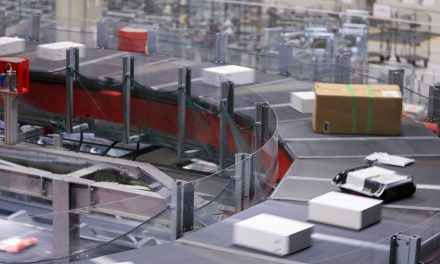
Norway Post achieving growth despite mail volume declines
Norway Post has said its cost-cutting efforts and restructuring have helped lift revenue and profits in the third quarter of the year. The state-owned Post said its revenues rose 4.3% in the nine months up to the end of September, to NOK 17.85bn (EUR 2.07bn), with reported pre-tax earnings up 4.4% year-on-year to NOK 520m (EUR 60.5m) in the year-to-date.
But after transformation costs, profit after tax so far in 2013 is down 40% to NOK 214m (EUR 24.8m).
The company said acquisitions helped with revenue growth.
The quarter also saw delivery quality and staff sickness rates improving.
But, the company said efficiency measures being taken were no longer able to compensate completely for the continuing fall in mail volumes. Addressed mail volume dropped 7.1% year-on-year in the third quarter, and have now fallen 45% since the peak year in 1999.
However, reforms could be on the way to help Norway Post respond further to the market trends.
Posten Norge CEO Dag Mejdell said: “Posten Norge has made great changes in order to adapt its operations to new user needs. The reorganisation from post offices to Post in Shops will soon be finished. The next major change will be to drop Saturday as an ordinary mail-distribution day. We’re pleased that the Government is suggesting such a solution in the new draft Postal Services Act.”
Divisions
With advertising mail volumes down 1.5% in the quarter, mail revenue is down 2.2% in the first nine months, to NOK 7.39bn (EUR 859m), with mail operating income down 11.1% to NOK 861m (EUR 100m).
Mail sent by the public sector declined by 12%, and the trend is expected to strengthen as the public sector starts to use digital mail as required by new regulations. The positive for Norway Post is that its digital mailbox platform, Digipost, has been chosen as one of the providers of secure digital mail for the public sector. The government has also agreed to provide funding from 2015 to support the universal service.
“Physical mail is declining and digitisation has come a long way in Norway. Posten Norge will offer both physical and digital mail in the future,” said Mejdell.
As of 30 September 2014, the overnight delivery quality of Posten Norge’s A-mail was 86.6%, 1.6 percentage points better than its licence requirement. The other five licence requirements were met by a good margin, the company said.
With the fall in letter volumes, parcels and logistics are becoming increasingly important for Norway Post, with the company’s investments responding appropriately.
The company has now converted seven of its 18 terminals to be combined parcel and freight locations, and building on e-commerce growth is pushing to expand its business delivering to consumers in Sweden and Denmark.
In the first nine months of the year, logistics division revenue — which includes parcels, express and cargo activities — was 6.6% higher in the first three quarters of 2014, to NOK 11.7bn (EUR 1.36bn), with earnings 57% higher at NOK 507m (EUR 58.9m).
“We can see the results of our efforts to develop an increasingly better service for our customers. In the third quarter, a new terminal for parcels, goods and mail was completed in Molde, Norway, a new terminal was opened in Finland and construction work started on a new logistics centre in Oslo,” said Mejdell.
The Group’s sickness absence rate is continuing to decline. So far in 2014, the sickness absence rate has been 6.4 per cent, a reduction of 0.2 percentage points compared to the same period in 2013.
The number of employees in the Group has been reduced by 1,039 full-time equivalents during the past 12 months. Much of this reduction is due to the reorganisation of post offices into Post in Shops.












